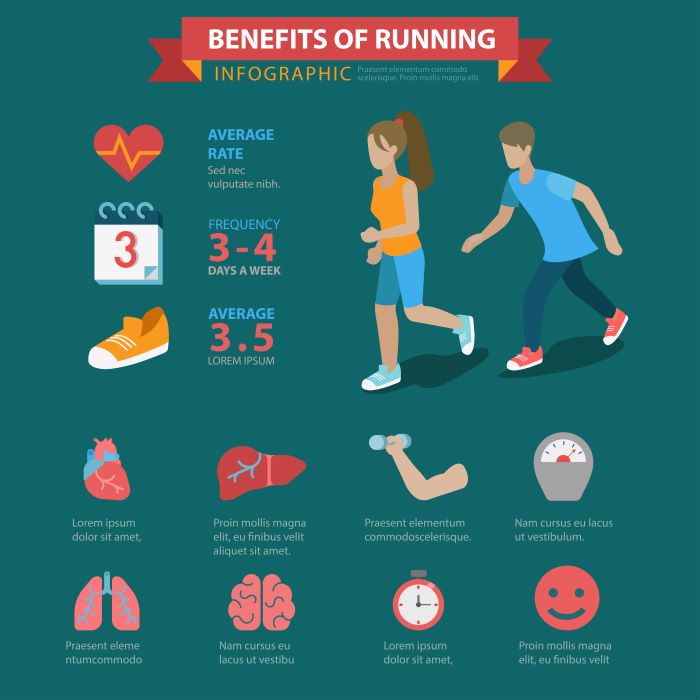When you lace up your running shoes and hit the pavement or trails, **_multiple muscle groups_** are activated, working together in a symphony of movement. Understanding these muscle groups is crucial for maximizing your performance and preventing injuries. The primary muscles engaged during running include:
- Quadriceps: Located at the front of your thighs, these muscles are responsible for extending your knees and propelling you forward.
- Hamstrings: Found at the back of your thighs, hamstrings play a critical role in bending your knees and stabilizing your stride.
- Calves: The gastrocnemius and soleus muscles in your calves help elevate your heel off the ground, enabling efficient toe-off during each step.
- Glutes: The gluteus maximus, medius, and minimus are essential for maintaining hip stability and power, contributing to your overall speed and endurance.
- Core Muscles: A strong core, including your abdominals and obliques, supports your posture and balance, helping you maintain an efficient running form.
Additionally, your **_upper body_** plays a vital role in running. Your arms drive the rhythm of your legs, and maintaining proper arm swing can enhance your overall speed. Engaging these muscle groups effectively not only improves your running efficiency but also reduces the risk of injuries.
To delve deeper into how to optimize your workouts and running technique, visit our website to learn more and get started today! Click here.
Primary Muscles Used While Running

As you embark on your running journey, it’s essential to recognize the **_primary muscles_** that power your every stride. Each muscle group plays a unique role in ensuring you maintain speed, endurance, and proper form. Here’s a closer look at the key players:
- Hip Flexors: These muscles, located at the front of your hips, are responsible for lifting your knees and allowing for a full range of motion. Engaging your hip flexors effectively contributes to a more powerful stride.
- Quadriceps: As previously mentioned, the quadriceps are crucial for extending your knees. These muscles are particularly active during the push-off phase of your run, giving you the necessary force to propel yourself forward.
- Hamstrings: Working in conjunction with the quadriceps, your hamstrings help in the flexion of the knee. They also play a significant role in maintaining balance and control during your run.
- Calves: The calf muscles are key for pushing off the ground with each stride. They help to absorb the impact of landing and contribute to the spring-like motion needed for an efficient run.
- Glutes: The gluteus maximus is one of the largest muscles in the body and is vital for driving your legs backward, which generates forward momentum. Strong glutes also help stabilize your pelvis during running.
Incorporating strength training that targets these muscle groups can significantly enhance your running performance and reduce the likelihood of injury. Focusing on exercises that build the strength and endurance of these primary muscles will help you achieve your fitness goals more efficiently.
Supporting Muscles That Enhance Running Performance
While the primary muscles are crucial for running, several **_supporting muscles_** also contribute to enhanced performance and injury prevention. These muscles help stabilize your body, improve your form, and ultimately make your runs more efficient. Here’s a breakdown of these important muscle groups:
- Core Muscles: A strong core is essential for maintaining good posture and balance while running. This includes the abdominal muscles, obliques, and lower back, which work together to stabilize your torso and transfer power efficiently through your legs.
- Hip Abductors: Located on the outer part of your hips, these muscles help keep your legs aligned and prevent excessive lateral movement during your run. Strengthening your hip abductors can improve your stability and reduce the risk of injuries.
- Adductors: Found on the inner thighs, adductors assist in bringing your legs together during the running stride. They play a key role in maintaining balance and control, particularly on uneven terrain.
- Lower Back Muscles: A strong lower back supports your running posture and can prevent strain on your spine. These muscles help maintain an upright position, allowing for efficient breathing and reducing fatigue.
- Shoulders and Upper Back: Although not directly involved in the running motion, strong shoulders and upper back muscles contribute to proper arm swing, which aids in balance and rhythm. This coordination can enhance your overall running efficiency.
Incorporating targeted exercises for these supporting muscles into your workout routine can significantly boost your running performance. By developing a well-rounded strength program, you’ll not only improve your running efficiency but also enhance your overall fitness journey.
The Role of Core Muscles in Running

The importance of **_core muscles_** in running cannot be overstated; they serve as the foundation for a runner’s strength and stability. A strong core contributes to better posture, balance, and overall performance. Here’s how core muscles play a pivotal role in your running:
- Stability and Balance: Core muscles, including the rectus abdominis, obliques, and transverse abdominis, provide essential stability to your torso. This stability helps maintain balance during your stride, allowing you to run more efficiently, particularly on uneven surfaces.
- Posture Maintenance: Proper running posture is critical for efficiency and injury prevention. A strong core helps keep your spine aligned and upright, reducing unnecessary strain on your back and hips. This alignment allows for optimal breathing and energy use, making your runs feel smoother.
- Power Transfer: Your core acts as a bridge between your upper and lower body, facilitating the transfer of power generated by your legs to your upper body. A strong core allows for more effective arm movement, which is crucial for maintaining momentum and rhythm while running.
- Injury Prevention: Weak core muscles can lead to poor biomechanics, resulting in overuse injuries, such as runner’s knee or IT band syndrome. By strengthening your core, you can help prevent these common issues and promote longevity in your running journey.
- Improved Endurance: A well-conditioned core can help reduce fatigue during long runs. By supporting your body’s structure, core muscles allow you to maintain your form and pace even as you tire.
Incorporating core-strengthening exercises, such as planks, bridges, and Russian twists, into your routine can drastically improve your running performance. A strong core not only enhances your running efficiency but also contributes to your overall fitness freedom.
Benefits of Strengthening Running Muscles

Strengthening the muscles used in running provides numerous advantages that can enhance both performance and enjoyment of the sport. Focused strength training allows runners to unlock their full potential while minimizing the risk of injury. Here are some key benefits of strengthening running muscles:
- Increased Power and Efficiency: By building muscle strength, you improve your explosive power during runs. Stronger muscles enable you to push off the ground more forcefully, resulting in a faster pace with less effort. This efficiency is particularly beneficial during sprints or hill climbs.
- Improved Endurance: Strength training enhances muscular endurance, allowing you to sustain your pace over longer distances. Stronger muscles can generate power for extended periods without fatigue, enabling you to keep going strong even as the miles add up.
- Enhanced Speed: Strengthening your leg muscles, especially the quadriceps and hamstrings, can lead to improved speed. As your muscles adapt to resistance training, they become more capable of handling faster running speeds, ultimately boosting your overall performance.
- Injury Resistance: One of the most significant benefits of a well-rounded strength training program is the reduction of injury risk. Strengthening muscles, tendons, and ligaments helps stabilize joints and improve biomechanics, making your body more resilient against common running injuries such as strains and sprains.
- Better Recovery: Stronger muscles can aid in faster recovery post-run. Enhanced muscle strength leads to improved blood circulation, which helps in delivering nutrients and removing waste products more efficiently, reducing soreness and facilitating quicker recovery.
Incorporating strength training into your running routine—whether through bodyweight exercises, resistance bands, or weights—can significantly enhance your running experience. By focusing on strengthening the muscles involved in running, you’re investing in your long-term fitness journey.
Tips for Targeting Muscles in Your Running Routine

Integrating targeted muscle workouts into your running routine can greatly improve your performance and overall fitness. Here are some effective tips to help you focus on the muscles that are crucial for running:
- Incorporate Strength Training: Schedule regular strength training sessions that focus on your core, legs, and glutes. Exercises such as squats, lunges, and deadlifts can significantly enhance muscle strength and stability.
- Utilize Hill Workouts: Running uphill not only challenges your cardiovascular system but also engages your hamstrings, quads, and glutes. Adding hill sprints or inclines to your routine can provide a comprehensive workout for these muscles.
- Mix Up Your Runs: Incorporate various running styles such as tempo runs, interval training, and long-distance runs. Each style engages different muscle groups, ensuring a well-rounded workout that targets all the essential muscles.
- Focus on Form: Pay attention to your running form. Proper biomechanics can help you engage the right muscles effectively. Keep your posture upright, and ensure that your feet land beneath your body to maximize muscle engagement.
- Cross-Training: Consider adding cross-training activities like cycling, swimming, or yoga to your routine. These activities can target muscles that are less utilized in running while promoting overall strength and flexibility.
By implementing these tips, you can effectively target the essential muscles in your running routine, leading to improved performance and reduced injury risk. Visit our website to learn more and get started today! Click here.


